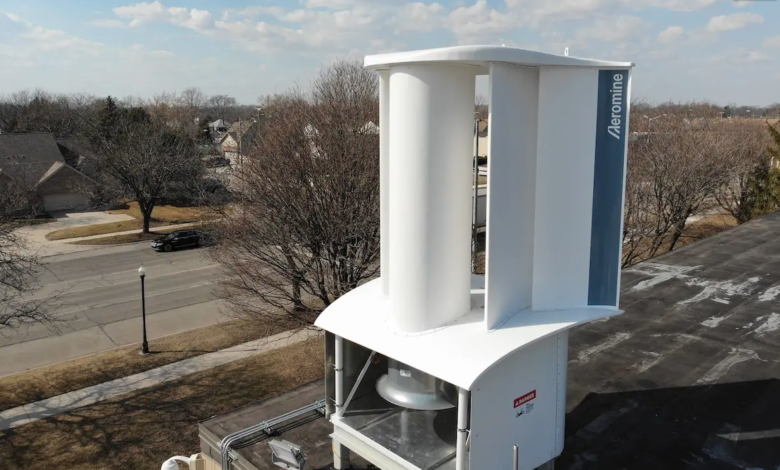Aeromine, the domestic small wind turbine “without blades”

The first domestic small wind turbine was apparently immobile
(sustainabilityenvironment.com) – It is presented as an alternative to the more traditional and well-known solar panels on the roof but promises to generate more energy with less space. Let’s talk about the domestic small wind turbine “without blades” made by Texas Aeromine Technologies (aeromine mini windgenerator). The company recently presented its patented technology for wind capture, a solution validated through joint research with Sandia National Laboratories and Texas Tech University.
What is it? In the form of a large, motionless cylinder with side wings. Unlike traditional horizontal or vertical axis turbines, Aeromine’s domestic mini wind turbine has no blades. At least not in sight. The design uses wing profiles similar to those of racing cars to generate aerodynamic forces that amplify the captured airflow. In other words, when the wind hits the wing profiles, it is literally “sucked” passively toward the bottom of the unit. Here hidden from view, there is the real turbine that is responsible for producing electricity.
The company through a press release lets you know that its small wind turbine for home is silent, easy to install and resistant to any weather. And that a number of companies, including the BASF Corporation, are already testing it. “The systems can consist of 20-40 units installed on the edge of a building facing the predominant direction of the wind”, reads the statement. “Designed to work seamlessly with the building’s existing electrical system, the combination of Aeromine mini windgenerator solution with rooftop photovoltaics can generate up to 100 percent of on-site energy needs, minimizing the need for energy storage”.
Small wind turbine on the roof, when it suits
The company does not provide many details, such as unit power or costs. From a paper, published on the US Department of Energy website by scientists who have validated the technology, we know that the device achieves a mechanical efficiency of about 1/3 of the Betz limit.
What is certain is that the small wind turbine for home continues to live in the great interest of consumers. Interest is growing at a time as energetically delicate as the current one where electricity and gas bills, especially in Europe, have generated a real price crisis. Could solutions like these lighten household energy spending? Much depends on technology, but positioning also plays a major role.
Read also GE presents 100% recyclable wind turbine blade
In general, the mini and the micro wind, while operating at lower wind speeds than large industrial wind turbines, still need a minimum start-up speed. It is therefore of fundamental importance to reason well on the installation site (location, height of the building, etc.) before considering such a plant. Help comes from two tools: the Global Wind Atlas of IRENA that provides accurate data on wind resources worldwide, easily, free and with an accuracy per km.





